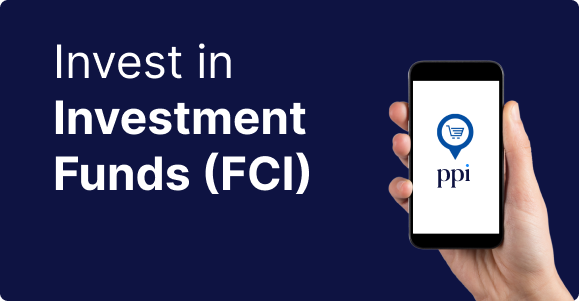Benefits of trading financial bonds
Fixed rent
You can know in advance the profitability that you will have from maintaining it to finish.
Cash flow
You will receive a periodic income according to the interest coupon and payment of the principal of the bonds.
Liquidity
Its secondary market is liquid and will allow you to have the funds if necessary.
What financial bonds can I invest in?
Access all quotes in real time, and choose the one that best suits your objective.
Potential your opportunities
In the Research section you will find all the reports to optimize your decisions.
FAQs
A bond is a debt security that a public or private entity issues for the purpose of financing itself. The issuer undertakes, according to the terms of the Issuance Conditions, to return to the investor on a certain date the amount received as a loan and to repay said loan with interest. Since whoever invests in a bond knows in advance the payment scheme and the income that he will obtain, these instruments are called Fixed Income. The opposite would be Variable Income instruments, where shares stand out, in which the investor is totally subject to the results achieved by the company and their reflection in the price. Bonds issued by the National State and provincial governments are called Public Securities, while bonds issued by private entities are called "Negotiable Obligations" or "Corporate Bonds". See Investments: Negotiable Obligations.
The basic measure of performance – or profitability – of bonds is the Internal Rate of Return (IRR), or Yield to Matuirity (YTM). It is the rate of return that equates the present value of the flow of funds (interest + capital amortization) to the market price of the bond (or the initial investment). It is very important to keep in mind that the IRR calculated at the time of making the investment will be equal to the return that it actually ends up giving, as long as two important conditions are met: 1) that the bond is kept in the portfolio until maturity, and 2) that all coupons collected can be reinvested at the same Internal Rate of Return at the time of purchase. If the bond is not kept in the portfolio until maturity, its sale price will impact the total return rate of the investment, potentially causing it to be different from that initially calculated. This is related to one of the risks of bond investing. Regarding the reinvestment of coupons, when they are invested at a lower IRR, the final return on the investment will be lower than what was estimated at the time of purchase (and vice versa). This is precisely what is called "reinvestment risk." Another measure of returns related to a bond investment is the current yield, or Current Yield. It is a performance measure that relates the annual coupon to the market price of the bond. The IRR will be higher than the Current Yield when the security is trading below par, and lower in the reverse case. The point is that the Current Yield considers only interest earnings, while the IRR also includes capital gains and the reinvestment of funds.
Yeah. Bonds can be issued under different conditions, and according to them they can be classified into groups: Zero coupon bonds: Zero coupon bonds are those that do not pay interest (coupon) during their existence. The interest rate that the investor obtains is implicit in the difference between the price he pays to acquire it, and what he obtains when he sells it or the bond matures. These bonds, therefore, are tendered - and then priced - at a discount. Fixed and floating rate bonds: With the exception of Zero Coupon bonds, the rest of the debt securities make periodic payments. The reference rate for the payment of income can be fixed or variable. Fixed interest rate bonds are those that set a certain rate when they are issued. In this same sense, there are bonds with a graduated fixed rate, that is, a fixed interest rate that increases as time passes (they are usually known as a step up coupon). Variable interest rate bonds are those in which the coupon is agreed based on the evolution of a certain reference interest rate, for example, BADLAR, etc. In some cases, a spread is usually added to this reference rate. Amortizable bonds during the life of the bond or at maturity (bullet): Bonds that amortize capital during the term of existence are those that return part of the borrowed capital in installments. Therefore, in addition to interest, the bond can pay an extra amortization amount. Amortizable bonds at maturity, on the other hand, and as the name indicates, return the entire capital loaned in a single payment at the end of the life of the bond. Inflation-adjustable bonds: Bonds that have an inflation adjustment clause are those whose capital is adjusted by a specific price index and interest is calculated on adjusted balances. Linked Dollar Bonds: These are titles denominated in dollars, but that are subscribed and paid in pesos. But they do the latter at the official exchange rate -at the time of integration, and at the time of payment-. There are also convertible bonds, bonds with a repurchase option (Callable Bond), and other income coupons at the same rate.
The characteristics of the bond are expressed in its Issuance Conditions, and it is important that each investor knows them before investing. Among them, we highlight at least 10 keys: 1.- Who is the issuer. A country, a province or a company?- 2.-Total amount of the issue, and minimum amount that can be purchased. It makes it easier to know the liquidity of the bonds in the market 3.- Quotation and payment currency, which are not necessarily the same. 4- Expiration date. Indicates the day on which the bond ceases to exist, and the issuer terminates the obligation. 5.- Interest rate you will pay and what that payment will be like. Its rate can be fixed or variable, and the interest payment structure can be monthly, quarterly, etc… 7.-Amortization Structure. The capital return dates that can be partial or total at the end of the life of the bond (what is known as a bullet). 8.- Indexing. Especially in Argentina this is a very important point. The bond may have a capital or interest indexation scheme to different indicators, for example, inflation (CER), interest rates (BADLAR) or the dollar rate (Dollar Linked bonds). 9.- Guarantee and Legislation. 10.- Risk rating
The Principal (known in English as Face Value) is the amount that whoever purchases a bond will receive at the end of its life. This return of capital can be made in installments, or complete at the end of the life of the bond. Principal payments are called amortization. There are also cases of bonds that capitalize interest. In this way, the Principal of these bonds increases as they capitalize coupons. While the coupon is the amount that the bondholder will receive in interest and amortization (if it amortizes in installments). The payment frequency is variable; It can be monthly, quarterly, semiannual or annual.
There are several relevant pieces of information when making a decision. For example, the Technical Value that indicates the redemption value of the security at the current time. It is defined as the residual value plus accrued interest. Meanwhile, the Residual Value indicates the amount of capital that has not yet been paid by the issuer, that is, the proportion of the principal not amortized. If the capital is amortized in a single installment, the residual value will be equivalent to its face value throughout the life of the bond. In the event that the capital is amortized in partial installments, the residual value will be reduced with each payment as established in the issuance conditions. Finally, parity is the relationship between the price and its technical value. When the parity of the bond is 100%, the bond is said to be trading at par. If it is greater than 100%, above par; and if it is less, under par.









